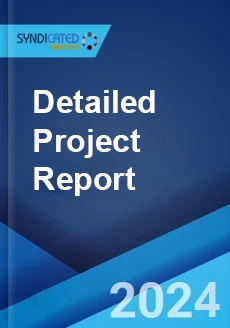
Geosynthetics Market: Global Industry Analysis, Market Size, Share, Trends, Application Analysis, Growth and Forecast, 2023-2028
Report Overview:
“Global Geosynthetics Market: Industry Analysis, Market Size, Share, Trends, Application Analysis, Growth and Forecast, 2023-2028” provides a deep and thorough evaluation of the global Geosynthetics market. Geosynthetics are synthetic or polymeric materials used to stabilize terrains such as soil, rock, and other building materials. They can be buried underground, underwater, and built into walls with a low expectation of deterioration or degradation. Geosynthetics find utilization in various environmental activities such as filtration, landfill, and civil construction of bridges, flyovers, roads, and highways. They exhibit major advantages of structural maintenance and enhanced shelf life, owing to their ability to withstand harsh climatic conditions. They also have excellent flexibility and filtration that can be controlled as per the requirement. Some of the common geosynthetics include geotextiles, geogrids, geonets, geocells, geomembranes, and geocomposites. In recent years, geosynthetics have replaced conventional raw materials in transportation, mining, and agricultural industries.
The global geosynthetics market is primarily driven by the increasing need for repurposed wastewater. Geosynthetic line systems are used at wastewater treatment plants to protect water resources, including lakes, rivers, ponds, aquifers, and reservoirs. Besides this, the rising environmental awareness is increasing the usage of green roofs and walls to prevent soil erosion and better management of the water drainage system. Furthermore, the growing utilization of geosynthetics in the energy sector, especially oil, gas, and nuclear energy, is also fueling market growth The increasing energy demand has also resulted in the establishment of more power plants, thus making use of geosynthetic materials for soil stabilization and leakage protection. In addition, the rising number of ongoing projects to enhance civic amenities, along with the expansion of the transportation sector, is facilitating the market further. Moreover, rapid industrialization and the widespread utilization of geosynthetics in controlling seepage-related complications in irrigation and other development projects are some of the other factors that are expected to create a positive outlook for the market.
Beginning with a global overview, the report explores the dynamics that have a strong influence on the geosynthetics market and can also impact its future growth. Taking 2022 as the base year, the report covers the historical market scenario from 2017-2022 and provides forecasts till 2028. This includes the study of value and volume trends and pricing history. Growth-inducing factors, market restraints and recent developments have also been analysed in the report in order to provide deeper knowledge about the industry. On a regional basis, the report examines the geosynthetics market in North America, Europe, Asia-Pacific, Latin America and Middle East & Africa. For each of these regions, the report studies the geosynthetics market in detail for the latest trends, outlook and opportunities.
The report analyses the competitive structure of the geosynthetics industry and provides the profiles of major players operating in the market. The price margins for the products, along with the various success and risk factors for manufacturers, have also been covered in the report. Moreover, in order to determine market attractiveness, the report analyses the geosynthetics industry along the parameters of Porter’s Five Forces model. This model examines the degree of competition in the geosynthetics industry by analysing the threat posed by new entrants and substitutes and the bargaining power of suppliers and buyers. SWOT analysis of the market has also been presented in the report, which highlights the strengths, weaknesses, opportunities and threats pertaining to the geosynthetics industry. Furthermore, the value chain analysis of the geosynthetics industry has also been covered in the report. This comprises all the activities in the value chain, such as the procurement of various raw materials, manufacturing, sales and distribution.
Key Segments and Highlights of the Global Geosynthetics Market
- Historical and current scenario
- Trends and developments
- Market forecast
- Price analysis and forecast
- Porter’s five forces analysis
- SWOT analysis
- Value chain analysis
- Market Breakup by Type
- Market Breakup by End-Use
- Market Breakup by Region
- North America
- Europe
- Asia-Pacific
- Latin America
- Middle East & Africa
- Key players
The report is a result of exhaustive primary and secondary research undertaken by analysts having years of experience in the Geosynthetics Industry. All the qualitative and quantitative aspects of the industry have been covered and the collected data has been analysed and presented in the form of easily comprehensible charts, graphs and tables.
Purchase Options
Ask For Customization
Personalize this research
Triangulate with your own data
Get data as per your format and definition
Gain a deeper dive on a specific application, geography, customer or competitor
Any level of personalization
Get in Touch
Call us on
US: +1-213-316-7435
Uk: +44-20-8040-3201
Drop us an email at
sales@syndicatedanalytics.com